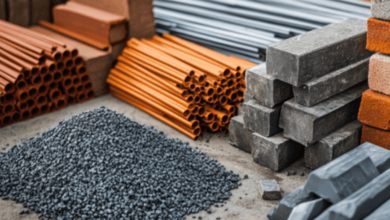
The Difference Between Automatic and Semi-Automatic Filling Machines
What is a Filling Machine?
A filling machine is a machine used for precise filling of paste, liquid, or powder products into containers. It is one of the widely used machinery in food and beverages industry, cosmetics industry, pharmaceutical industry, home chemicals industry, and chemical industry. Filling machines not only enhance production efficiency, but also filling accuracy and quality of products.
Filling machines may be distinguished on the basis of the degree of automation into automatic filling machines and semi-automatic filling machines. Fully automatic and semi-automatic filling machines are widely different from each other with regard to cost, operation, and usage.

Main Differences Between Fully Automatic and Semi-Automatic Filling Machines
Comparison Table
| Comparison Dimension | Fully Automatic Filling Machine | Semi-Automatic Filling Machine |
|---|---|---|
| Working Method | Fully automatic with PLC control; includes container feeding, positioning, filling, and capping | Requires manual operation, such as placing containers or pressing a button |
| Production Efficiency | High speed, ideal for mass production | Lower efficiency, more suitable for small batches and diverse products |
| Investment Cost | High initial investment but saves labor in the long run | Affordable, suitable for startups or businesses with limited budgets |
| Operation & Maintenance | Complex system requiring trained personnel | Easy to operate and maintain, less technical demand |
| Filling Accuracy | Highly precise, minimal error, ideal for standardized production | Good accuracy, but manual intervention may cause slight variations |
| Application Scenarios | Large food & beverage factories, pharmaceutical companies, large-scale chemical plants | Small factories, startups, customized or flexible production |
Characteristics of Fully Automatic Filling Machines
Advantages
- High degree of automation, reduces labor costs
- Fast filling speed, suitable for mass production
- High accuracy, ensuring consistent product quality
- Can be integrated into automated production lines
Disadvantages
- Expensive equipment
- Requires skilled operators and professional maintenance
Features of Semi-Automatic Filling Machines
Advantages
- Affordable, lower initial investment
- Simple structure, easy to operate and maintain
- Easy for small-batch and multi-variety production
- Requires less space
Disadvantages
- Lower efficiency, not ideal for mass production
- Higher long-term labor dependency
Application of Filling Machines in Industry
- Food & Beverage Industry
High speed and precision are required, which are best handled by fully automatic machines. - Cosmetics Industry
Semi-automatic machines are employed by small and medium-scale companies because of the sporadic alteration in the product specifications, while completely automatic machines are employed by large companies. - Pharmaceutical Industry
Requires very high precision and hygiene standards, so fully automatic machines are employed almost all the time. - Chemical Industry
Depends upon production quantity; small factories use semi-automatic, while large factories use fully automatic machines.
How to Choose the Right Filling Machine?
When making a choice between fully automatic and semi-automatic filling machines, companies must consider:
- Scale of Production
Universal large-scale production demands the employment of fully automatic machines, while small-run or custom production demands semi-automatic machines. - Product Features
For high-precision or high-viscosity products, completely automatic machines are recommended. For variety and flexibility, semi-automatic machines are more convenient. - Future Expansion
Businesses planning to expand should prioritize fully automatic filling machines to enable seamless upgrades.
Trends in the development of filling machines
The filling machine world is evolving very rapidly. Intelligent systems such as sensors and AI are increasingly being used for ongoing monitoring and process improvement. Machines are becoming multi-functional, capable of filling various containers and materials. Greening and energy efficiency are also becoming trends, with designs to save material and energy. Remote access through IoT also enables real-time monitoring of equipment operation and performance.
FAQ
Q1: How accurate are filling machines?
Machines with automatic function have a ±1% error rate while semi-automatic ones are not as precise.
Q2: Should small factories directly purchase fully automatic machines?
Not necessarily. If the orders in number are restricted, it would be better to start with a semi-automatic one and transition to a fully automatic one afterward.
Q3: Are filling machines difficult to maintain?
Semi-automatic machines are not difficult to maintain. Automatic machines require professional technicians but the majority of providers provide after-sales service.
Conclusion
Fully automatic and semi-automatic filling machines each have their own advantages. Fully automatic filling machines can be used in mass production, standardized production, and high-precision production, while semi-automatic filling machines can be used in small-scale, flexible, and diversified production requirements. When deciding on a filling machine, enterprises should take the production capacity, price, product type, and long-term development strategy into consideration in order to get the greatest possible efficiency and competitiveness.




